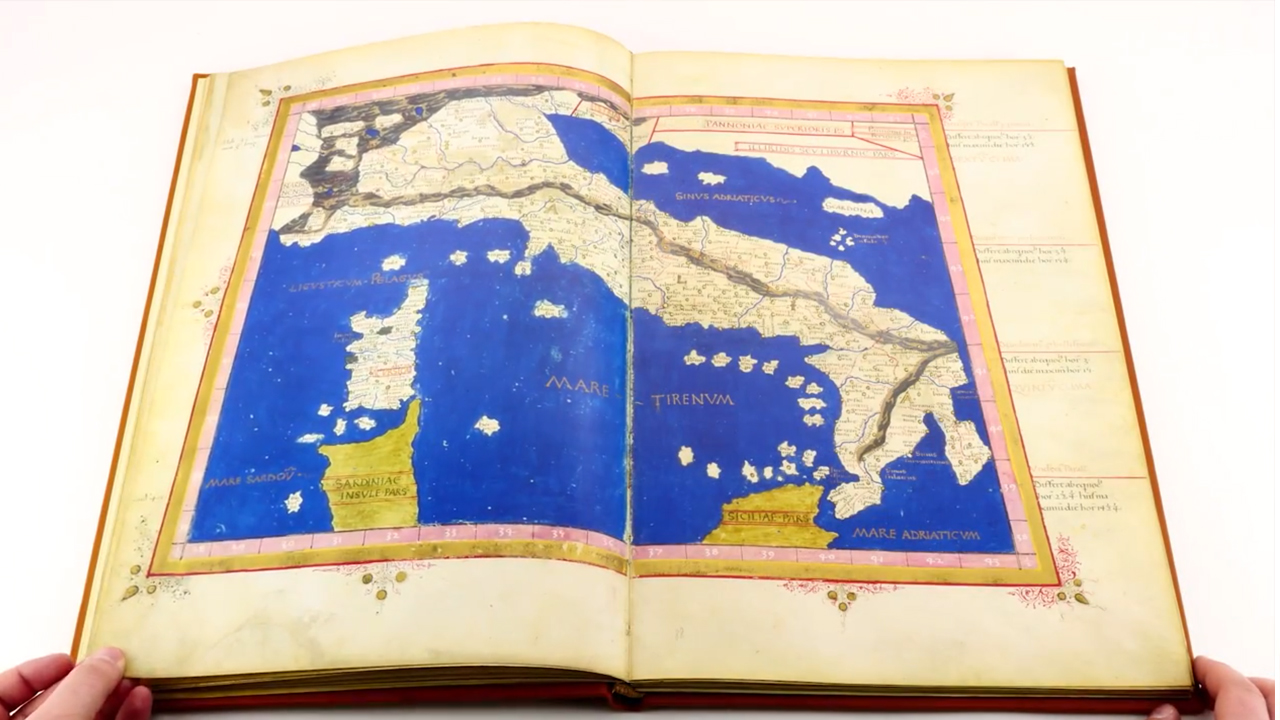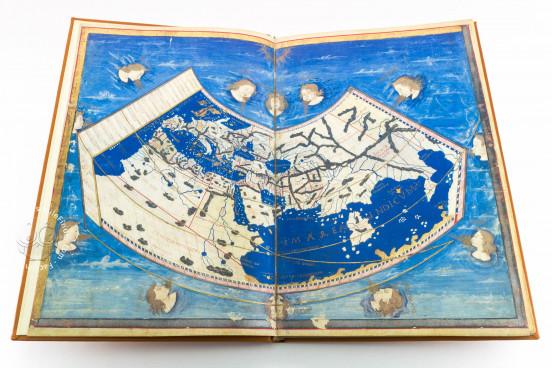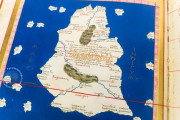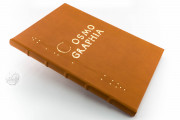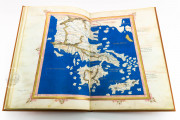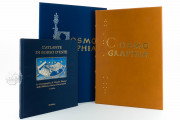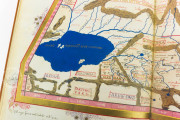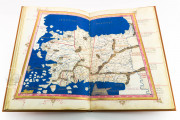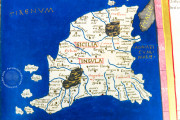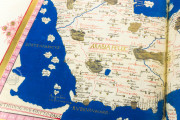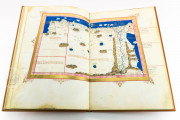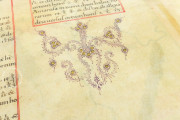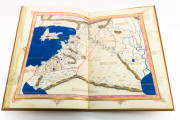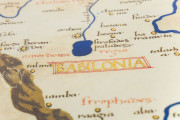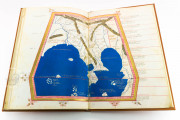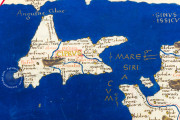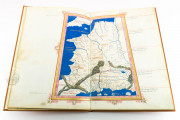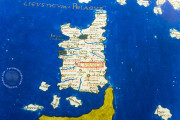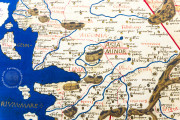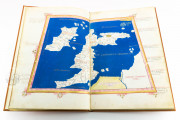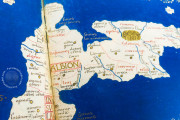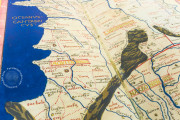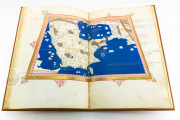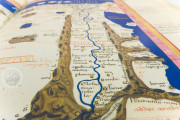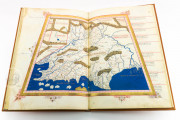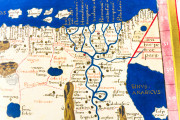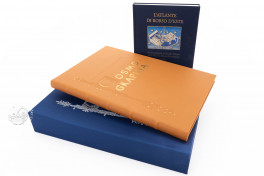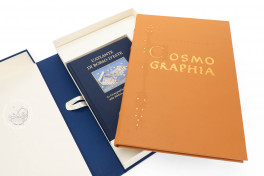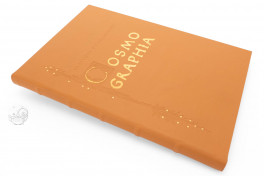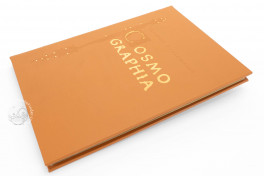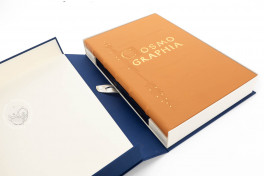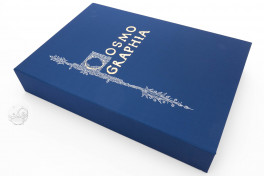One of the most significant features of the Atlas of Borso d’Este is the representation of Ptolemy's Cosmographia, a major milestone in Humanism.
Ptolemy's Cosmographia and Florentine Renaissance
The Ptolemaic vision of the world was handed down to the Middle Ages through the Greek manuscripts which were rediscovered during the fifteenth century when in cities such as Florence – artistically and culturally thriving – new geographic, scientific, and cartographic researches were developed.
It's in this backdrop that Florentine workshops focused on the creation and illumination of some of the most beautiful copies of Ptolemy's works. These creations were so popular that Renaissance's most influential leaders such as the king of France Louis XII, Matthias Corvino, Borso d'Este duke of Ferrara, and Federico da Montefeltro contended to add these manuscripts to their libraries.
The Atlas of Borso d'Este and its Author: Niccolò Germanico
In particular, the Atlas of Borso d'Este is one of the most exquisite atlases from Renaissance and as its title suggests, it was owned Borso, duke of Ferrara, who bought it from the German humanist Niccolò Germanico, author of the work, in 1466 at the price of 100 florins.
The manuscript bears the Latin translation of Ptolemy's Cosmographia by Jacopo Angelo da Scarperia and features twenty-seven geographical maps re-elaborated using trapezoid projections.
The maps were drawn in such a way that the first one exhibits an overview of the whole world (as it was known at the time), while the remaining twenty-six focus on individual regions and are accompanied by an explanatory text.
Example of Connection between Art and Science
The Atlas of Borso d'Este is an outstanding example of the tight connection between art and science. It bears testimony to the thriving scientific and cultural atmosphere of the time, reflecting the thirst for knowledge and the desire to push boundaries at the discovery of the unknown.
Representing a fundamental tool for sea and land expeditions, the Atlas of Borso still shows excellent conditions which seems to support the idea that the manuscript was made to be displayed rather than to be used.
Unfortunately, the Atlas of Borso d’Este, like many medieval manuscripts, lost its original binding. For this reason, the Estense Library, where the manuscript is currently kept, requested a new calf leather binding with dry and golden impressions and with the impression of the title.
We have 1 facsimile edition of the manuscript "Atlas of Borso d'Este": L'Atlante di Borso d'Este facsimile edition, published by Il Bulino, edizioni d'arte, 2006
Request Info / Price
